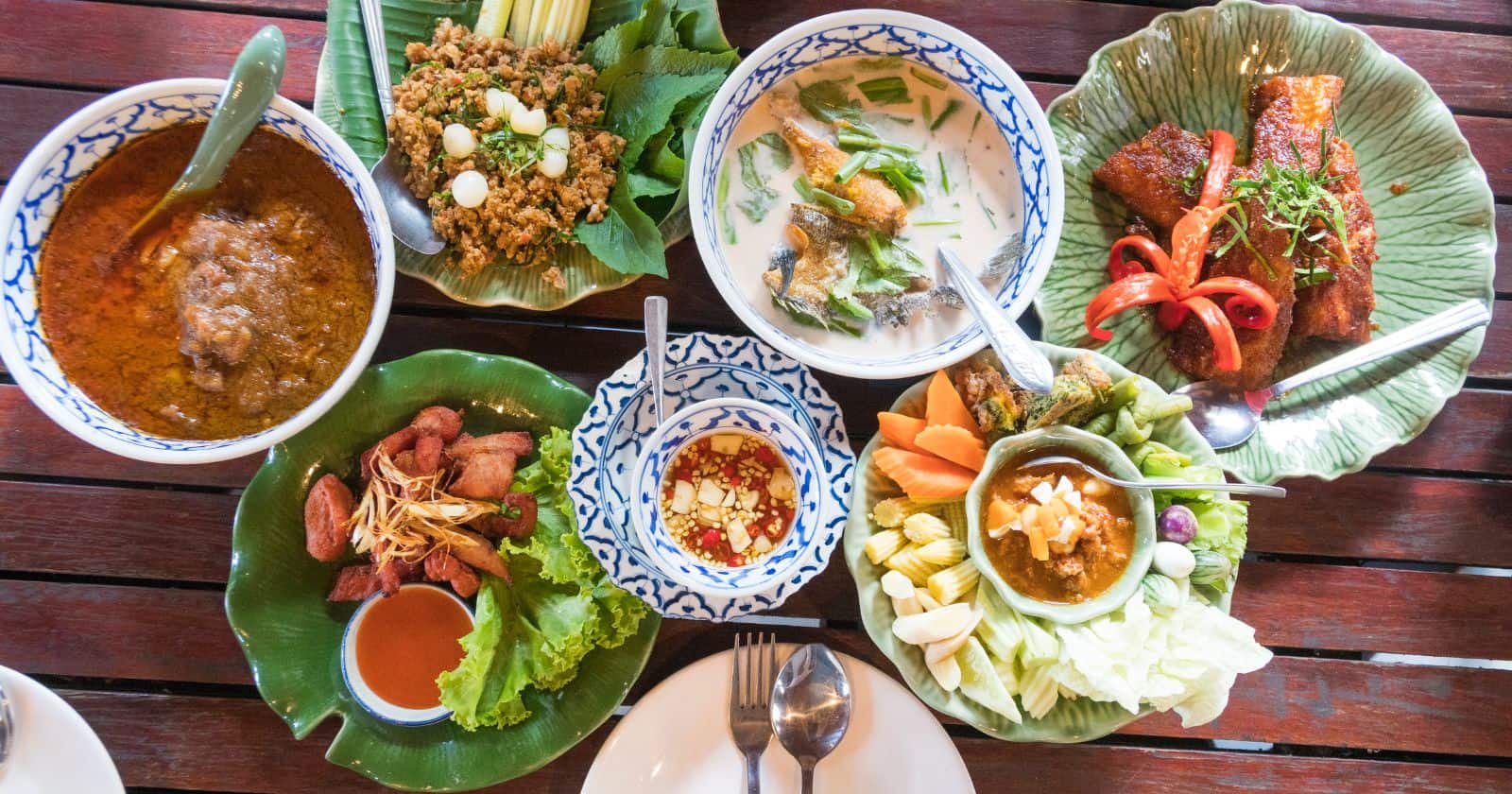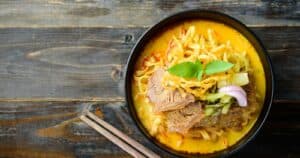This is a debated question among fans of Asian cuisine. The answer is nuanced, but generally speaking, Thai food edges out Chinese food in terms of health due to its emphasis on fresh ingredients, use of various herbs and spices, and lighter cooking techniques.
While both cuisines can be part of an overall healthy diet, Thai food tends to have less fat, salt, and sugar. It highlights nutrient-dense whole foods like vegetables, lean proteins, and high-fiber grains. Chinese food often relies more heavily on oil, sodium, and refined carbs.
In this article, we’ll explore factors like cooking methods, ingredients, nutrition profiles, and flavor additions that contribute to the healthiness quotient. You’ll learn why Thai food is often considered a healthier choice while still being able to enjoy both cuisines in moderation.
The key is focusing on dishes prepared with care using fresh, high-quality ingredients. With mindful choices, you can savor delicious Thai and Chinese meals that nourish your body and delight your taste buds. Read on to become an expert in comparing these iconic Asian foods!
Comparing Grease Levels in Thai and Chinese Cooking
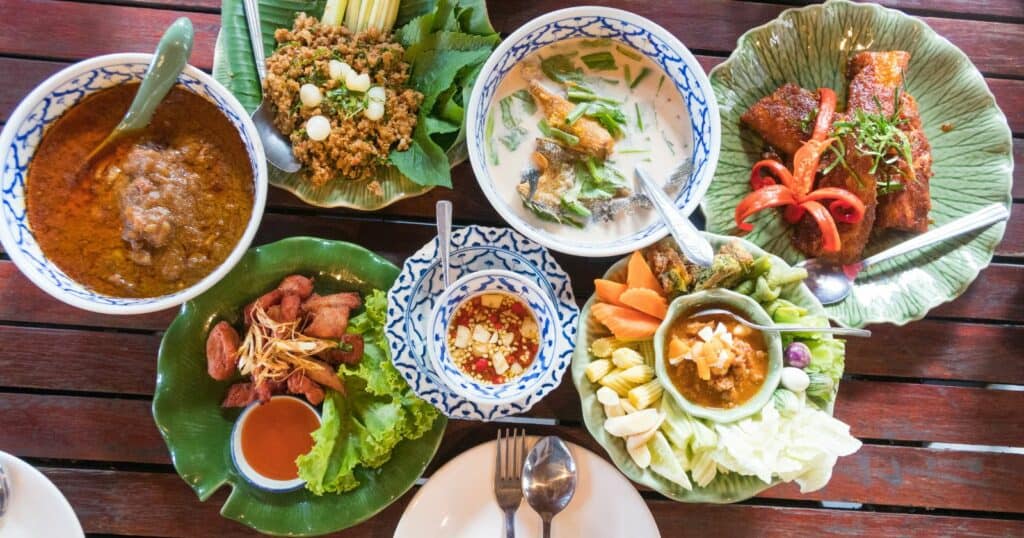
One of the biggest perceived differences between Thai food and Chinese food is the grease factor. Thai food has a reputation for being lighter and less oily, while Chinese food is often thought of as greasier. What causes this difference?
Thai cuisine Tends to Use Less Oil
Thai cooking relies heavily on stir-frying, grilling, and steaming—quick cooking methods that don’t require much added oil. The small amounts of oil used are also typically vegetable or peanut oil, which are healthier than animal-based fats.
Chinese Cooking Can Use More Oil for Deep-Frying
While Chinese cooking also utilizes stir-frying, it may incorporate more deep-frying as well. Dishes like fried rice, fried dumplings, and General Tso’s chicken are classics, but they soak up a lot more oil.
Sauce Thickness Impacts Grease Perception
Thicker, heavy sauces characterize many Chinese dishes, which can make them seem greasier. The lighter sauces and splash of lime juice brightening many Thai dishes appear less oily by comparison.
So in general, Thai food does tend to use less oil and taste less greasy. But It ultimately depends on the specific recipes and cooking methods.
The Importance of Fresh, Quality Ingredients
Using fresh, high-quality ingredients is essential for authentic and healthy Thai and Chinese cooking. This ensures maximum nutrition and the true intended flavors shine through.
Seeking Out Fresh Produce
Thai cooks shop daily at fresh markets and source local ingredients like chilies, lemongrass, and basil. Similarly, Chinese restaurants strive for fresh produce, herbs, and proteins.
Upholding Authenticity
Thai and Chinese immigrants in the US look to local Asian markets to find authentic ingredients that match the quality of their home countries. This maintains traditional tastes.
Maximizing Herbs and Spices
Thai food makes the most of fresh herbs and spices like galangal, kaffir lime leaf, and turmeric. Chinese food showcases dried spices like star anise and Sichuan peppercorns.
Boosting Nutrition
Using fresh ingredients and purposeful herbs/spices provides vitamins, minerals, antioxidants, and other beneficial plant compounds. This amplifies the health value of both cuisines.
So quality ingredients are invaluable for nutrition and authenticity of both Thai and Chinese dishes. They set the foundation for healthy, flavorful meals.
Comparing Nutritional Components of Thai and Chinese Cuisines
While both Thai and Chinese food can be healthy, Thai cuisine tends to emphasize ingredients that give it a better nutritional profile.
More Vegetables
Thai dishes pack in fresh vegetables, providing dietary fiber, vitamins, and minerals. Chinese dishes may use less produce or cook veggies longer, reducing nutrients.
Herbs and Spices
Common Thai ingredients like lemongrass, turmeric, and chili peppers contain antioxidants and anti-inflammatory benefits. Chinese spices like star anise have less health punch.
Seafood
Thai cooking often spotlights nutritious lean proteins like grilled fish. But Chinese seafood dishes may be fried or drenched in heavy sauces.
Balanced Flavors
Thai food balances sweet, sour, salty, bitter, and spicy. Chinese cooking loads up on salt, fat, and sugar more often.
Rice and Noodles
Thai cuisine favors brown rice and rice noodles, which have more fiber and nutrients than Chinese white rice varieties.
So in general, Thai cooking tends to emphasize vegetables, lean proteins, and balanced flavors that give it an edge for nutrition. But there are always healthy and less-healthy options in both cuisines.
How Cooking Methods Impact Healthiness
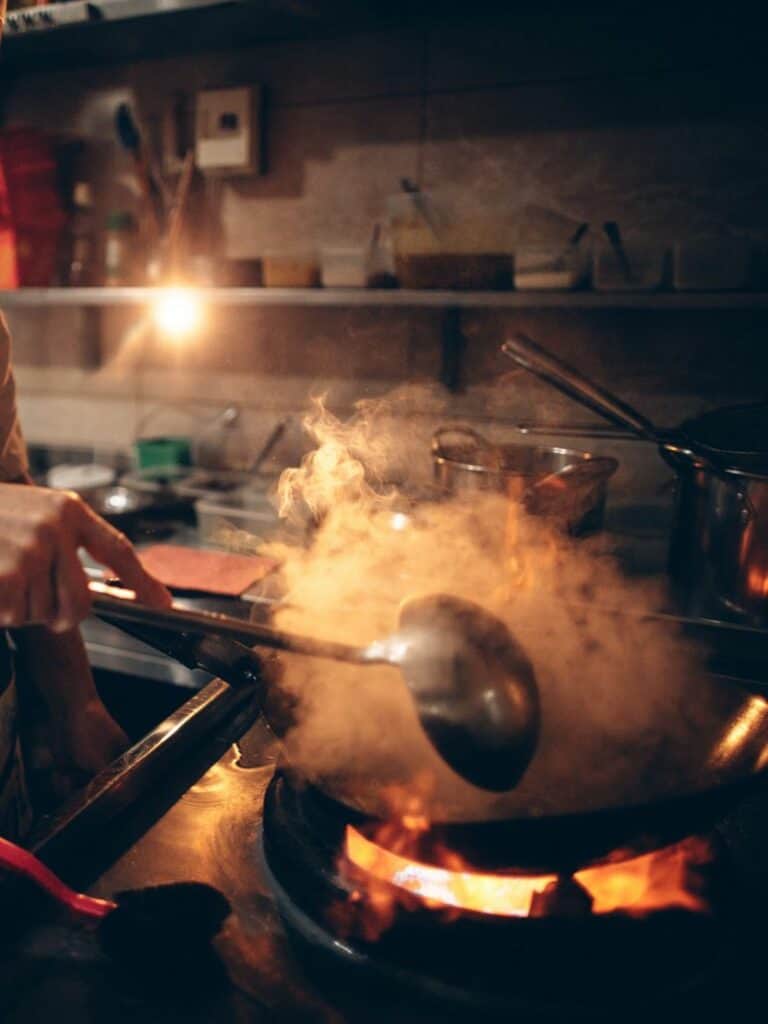
Cooking techniques significantly influence how healthy a dish turns out. Thai and Chinese cuisines have some overlaps but also some key differences in their approaches.
Thai Cooking Methods
- Stir-frying over high heat preserves nutrients and uses less oil.
- Grilling adds flavor with no oil needed.
- Steaming retains maximum vitamins and minerals.
Chinese Cooking Methods
- Stir-frying is also common but may use more oil.
- Deep-frying adds significant calories from oil.
- Steaming is popular for dumplings and fish.
Overlap of Healthy Techniques
Both cuisines utilize steaming to cook food without extra fat. And stir-frying certainly adds less oil than deep-frying.
So Thai cooking deserves its reputation for using healthier techniques more often. But Chinese cuisine also offers nutritious cooking methods. It comes down to the specific recipes used.
Achieving Flavor Without Excess Sodium
With so many bold flavors, it’s easy for Thai and Chinese dishes to get loaded up with sodium. Here are tips for enjoying the delicious taste while minimizing excess salt:
- Choose steamed or grilled proteins and veggies.
- Opt for broth-based soups rather than creamy ones.
- Request low-sodium soy sauce.
- Ask for sauces and condiments on the side.
- Skip the duck sauce, which is very high in sodium.
- Avoid fried rice and lo mein, which use a lot of oil and sauce.
- Balance salty dishes with plain brown rice or steamed greens.
- Drink unsweetened tea instead of soda.
With mindful menu selections, you can still delight your taste buds while keeping sodium in check when dining on Thai or Chinese food.
Comparing Thai and Chinese Flavor Profiles
While both deliver big, bold flavors, Thai food and Chinese food derive their taste sensations from different sources.
Heat and Herbs in Thai Cuisine
Thai cooking gets its punch from chili peppers, garlic, ginger, lemongrass, and galangal. Cilantro, basil, mint, and lime juice add vibrant finishing touches.
Umami in Chinese Cuisine
Chinese dishes develop rich, savory umami flavor from soy sauce, oyster sauce, hoisin sauce, and Shaoxing wine. Seared wok flavors amplify taste.
So Thai food highlights
Putting It All Together for Healthy Eating
Thai and Chinese food can both be part of an overall healthy diet with some simple strategies:
- Pick healthier cooking methods like steaming, grilling, and stir-frying. Avoid deep-fried dishes.
- Load up on veggies and add lean proteins like seafood, chicken, or tofu.
- Watch portion sizes, as restaurant servings are often very large.
- Use less oil and salt by having sauces served on the side.
- Choose brown rice for more nutrients and fiber.
- Drink unsweetened tea instead of sugary sodas.
- Savor every bite and eat slowly to prevent overeating.
By making smart menu picks, both cuisines offer nourishing and delicious options for healthy eating. The key is focusing on fresh ingredients, balanced nutrition, and mindful enjoyment.
So is Thai food healthier than Chinese food? With its emphasis on vegetables, herbs, spices, and light cooking, Thai cuisine gets the slight edge. But both can be great options when thoughtfully prepared and mindfully consumed.
Healthy Thai Dishes to Try
If you’re looking to experience authentic Thai flavors while maintaining a balanced diet, these dishes are great options to order or prepare at home:
Thai Coconut Soup (Tom Kha Gai)
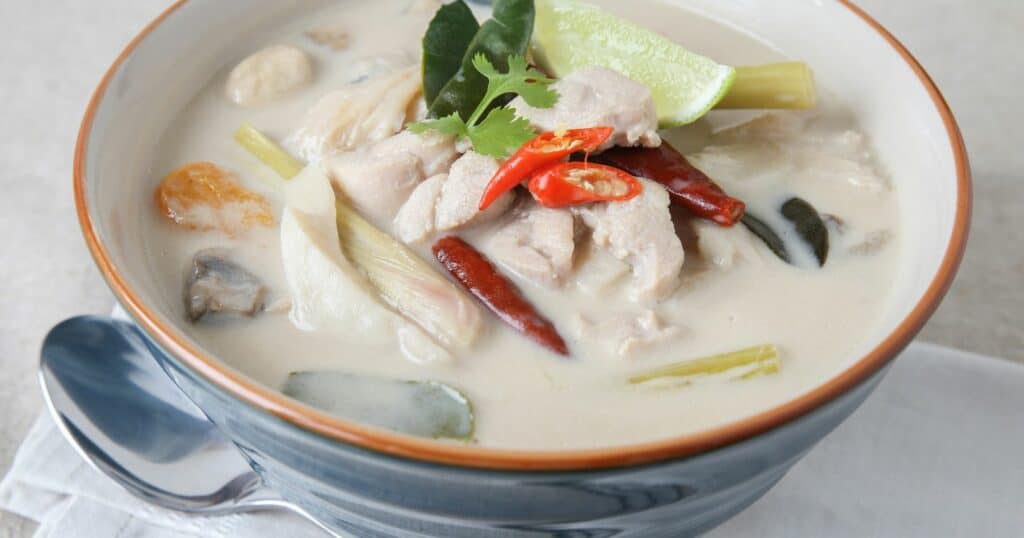
This comforting coconut milk-based soup gets its savory flavor from chicken, ginger, lemongrass, galangal, lime, and mushrooms. It’s lower in calories than cream-based soups.
Papaya Salad (Som Tum)
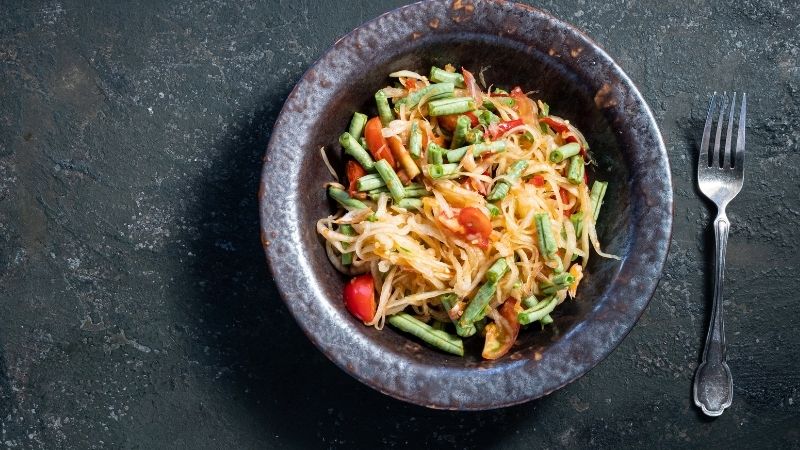
A popular Thai salad made with shredded papaya, tomatoes, green beans, peanuts, garlic, chilies, and a tangy lime dressing. It’s packed with antioxidants.
Stir-Fried Basil (Pad Kra Pao)
This dish combines ground chicken or beef with Thai holy basil, chili peppers, and garlic for a quick protein and veggie meal. Basil offers anti-inflammatory benefits.
Grilled Shrimp Skewers (Kung Yang)
Marinated in garlic, coriander, and pepper, these shrimp skewers are grilled for a lean, protein-packed option full of flavor.
Vegetarian Green Curry
Thai curries get anti-inflammatory power from herbs and spices like lemongrass, basil, and turmeric. Vegetables provide vitamins and minerals.
Healthy Chinese Dishes to Enjoy
You can also find nutritious and delicious options when selecting Chinese menu items. Here are some healthier picks to try:
Hot and Sour Soup
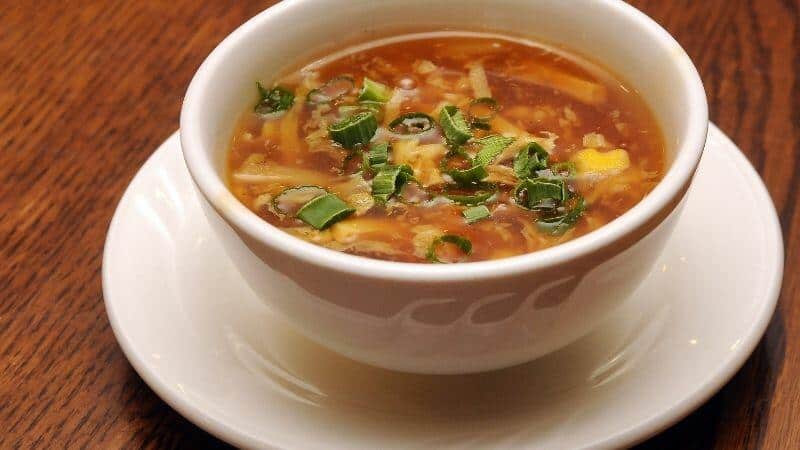
This broth-based soup combines tofu, mushrooms, bamboo shoots, vinegar, and
Steamed or Pan-Fried Dumplings
Opt for steamed or pan-fried dumplings over deep-fried. Filled with healthy veggies and lean protein, they make a satisfying appetizer.
Buddha’s Delight
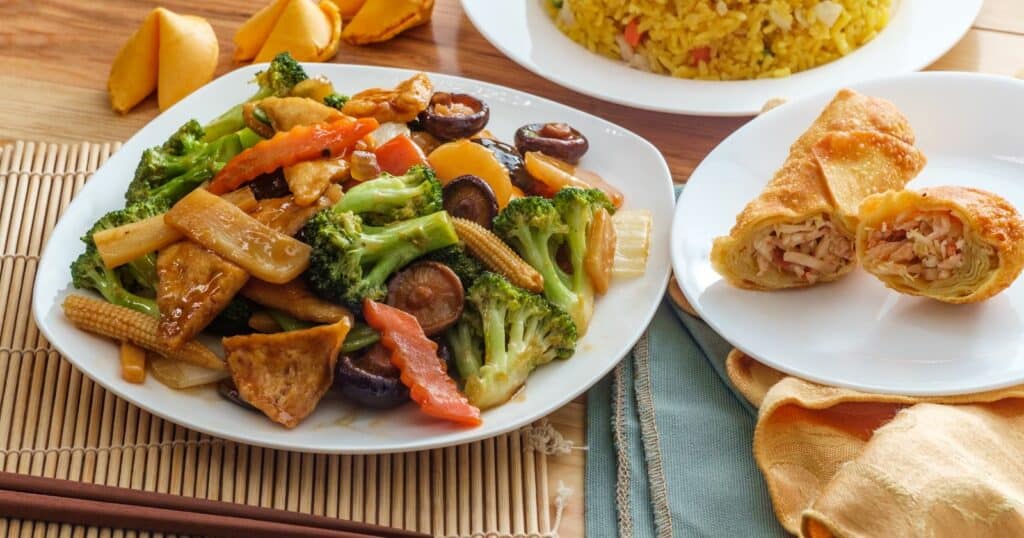
This traditional stir-fry loaded with vegetables like bok choy, mushrooms, and broccoli is a great way to increase your veggie intake.
Black Bean Sauce with Chicken
Savory fermented black beans add rich flavor to this dish while chicken provides a boost of lean protein. Serve with brown rice.
Kung Pao Chicken
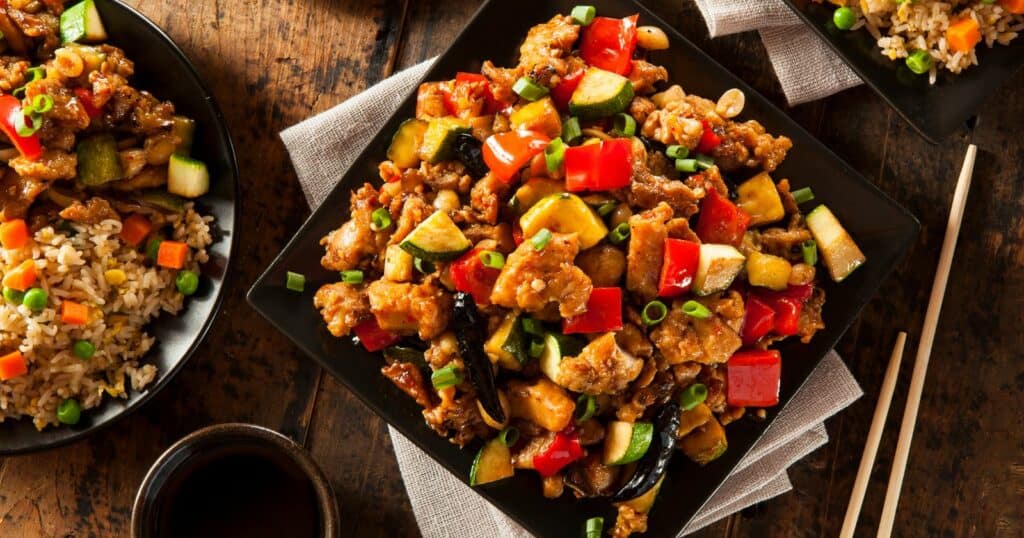
A lighter preparation of this classic ditches the fried chicken for a grilled version with veggies and chili peppers.
The true answer depends on the specific dishes you choose. By comparing the nutrition, ingredients, and cooking methods, you can enjoy the health benefits of these flavorful Asian cuisines. What are your favorite healthy Thai and Chinese dishes? Let us know in the comments!

